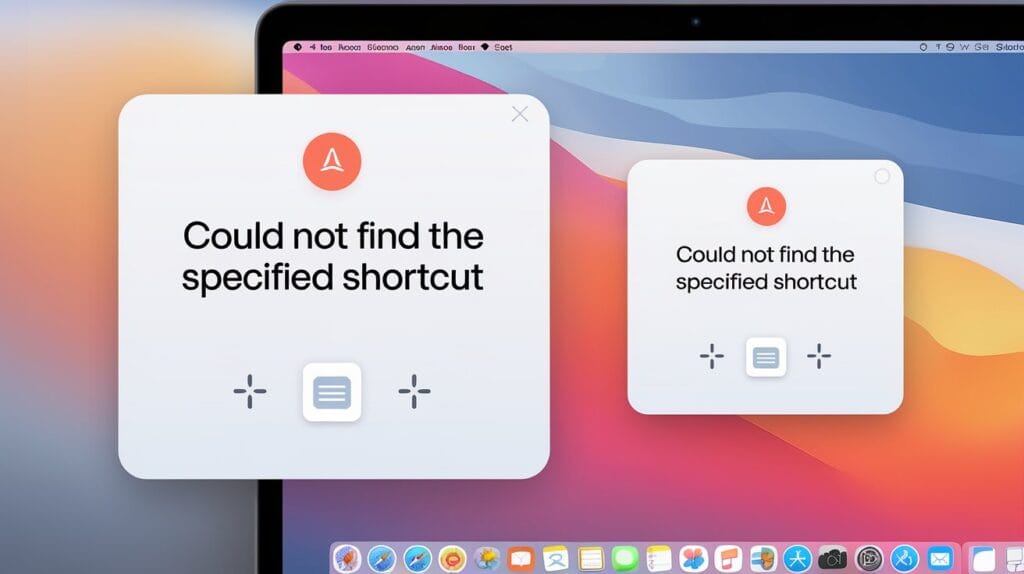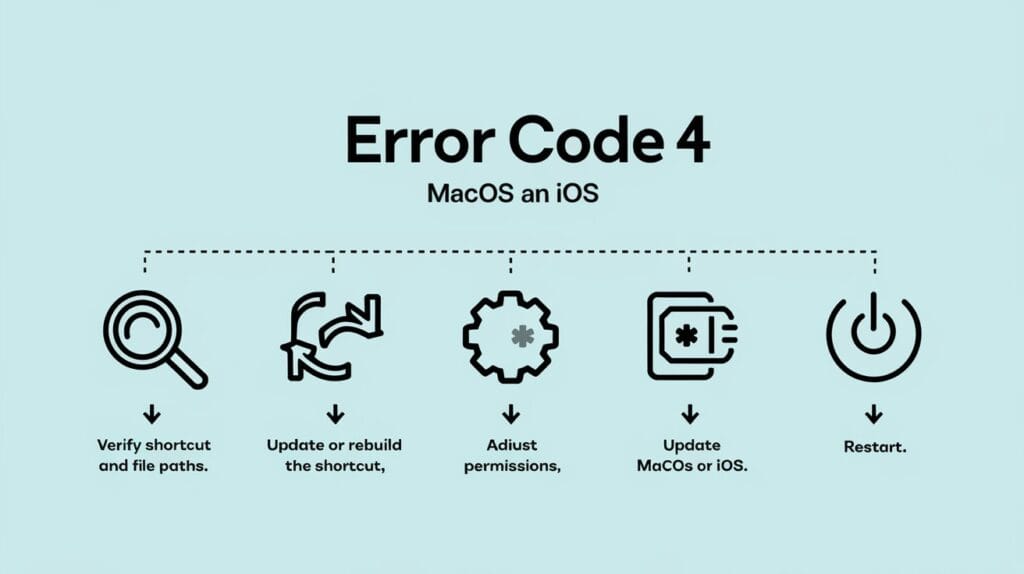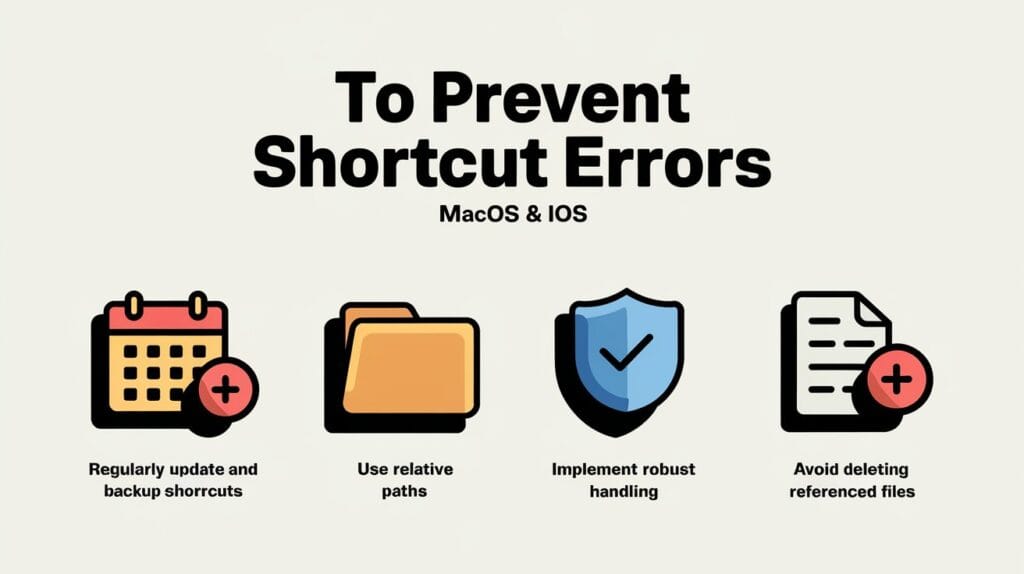Encountering error messages on Apple devices is common for developers and users alike, especially when working with complex automation tasks or integrating third-party applications. One such error that many developers stumble upon is “ErrorDomain=NSCocoaErrorDomain & ErrorMessage=Could Not Find the Specified Shortcut & ErrorCode=4.” This guide explores what this error means, why it occurs, and, most importantly, how to fix it effectively.
To fix the NSCocoaErrorDomain Code 4 error, verify the shortcut’s path and permissions, update or recreate the shortcut if needed, and ensure your system is up-to-date.
What is NSCocoaErrorDomain and Error Code 4?

The NSCocoaErrorDomain is part of Apple’s Cocoa framework, which is the core of macOS and iOS application development. This framework provides developers with the tools needed to create Apple applications with file management, user interfaces, and other foundational components. NSCocoaErrorDomain errors typically arise when there are issues with file management, system permissions, or shortcuts in the Cocoa framework.
Error Code 4 specifically indicates that the system could not find the requested file or shortcut, leading to the “Could Not Find the Specified Shortcut” message. This error disrupts tasks and workflows, especially in automation setups or when using Apple’s Shortcuts app, causing frustration and potential workflow disruptions.
Understanding the Causes of Error Code 4
To effectively troubleshoot and resolve this error, it’s essential to understand why it happens. Here are some common causes:
1. Missing or Outdated Shortcuts
Sometimes, shortcuts become outdated or deleted, especially after software updates or file system changes. Shortcuts created with previous configurations may no longer align with the current system, resulting in broken paths.
2. Incorrect File Paths
Automation tasks or shortcut workflows rely on specific file paths. If files or folders are moved, deleted, or renamed without updating the path in your automation or shortcut, the system will not be able to locate the required files, resulting in Error Code 4.
3. Insufficient Permissions
Permissions play a crucial role in accessing files and shortcuts on macOS and iOS. If an application does not have the necessary permissions to access a file, it will report this error even if the file path is correct.
4. System Bugs or Outdated Software
Running an outdated version of macOS or iOS can increase the likelihood of encountering this error. System bugs are more common in older software versions, and the “Shortcut Not Found” error may occur due to compatibility issues between outdated system versions and newer shortcut workflows.
Common Scenarios for Error Code 4
The Error Code 4 in NSCocoaErrorDomain can manifest in various scenarios:
- Running Custom Shortcuts: When attempting to execute custom shortcuts in the Shortcuts app, especially if there are missing components.
- Automating Tasks on iOS: If you use automation workflows that depend on shortcuts, any missing or outdated links can trigger this error.
- Third-Party App Integration: Some third-party applications that interact with Apple’s shortcuts may show this error if they cannot find the specified shortcut due to path or permission issues.
Step-by-Step Troubleshooting Guide for Error Code 4

Here’s a comprehensive guide to troubleshooting and fixing Error Code 4.
Step 1: Verify Shortcut and File Paths
- Check Path Validity: First, open the Shortcuts app and verify that the shortcut in question has valid, updated paths.
- Use Finder or Terminal: On macOS, check the path by navigating to the location in Finder. Alternatively, use the command
ls /path/to/your/filein Terminal to confirm the file’s existence.
Step 2: Update or Rebuild the Shortcut
- Rebuild Outdated Shortcuts: If the shortcut is outdated or modified, update it to align with the new file paths.
- Recreate the Shortcut: If updating does not resolve the issue, delete the shortcut and rebuild it from scratch. This can eliminate any lingering issues with path integrity.
Step 3: Adjust Permissions
- Check Permissions in Finder: Right-click on the file or folder, select Get Info, and review permissions under the Sharing & Permissions section.
- Grant Required Permissions: Ensure that your application has the required permissions. You can use the command
chmod +r /path/to/your/filein Terminal to grant read permissions. - Modify App-Specific Permissions: On iOS, go to Settings > Privacy > Files and Folders and confirm that the relevant application has access to required files.
Step 4: Update macOS or iOS
- Check for Updates: Ensure that you are running the latest version of macOS or iOS. Regular system updates improve stability and compatibility.
- Perform an Update: On iOS, navigate to Settings > General > Software Update. On macOS, go to System Preferences > Software Update to install any available updates.
Step 5: Restart Shortcuts App or Device
If the issue persists, restart the Shortcuts app or your device to clear temporary bugs or conflicts that may be causing the error.
Advanced Solutions for Persistent Shortcut Errors
If the above steps don’t resolve the error, here are advanced troubleshooting methods:
1. Reset System Settings
- Caution with Resetting: This should be a last resort, as it can affect other configurations on your device.
- Restore Factory Settings: Go to Settings > General > Reset on iOS or System Preferences > Reset on macOS to reset settings without erasing data.
2. Use Time Machine for Restoration (macOS)
- Restore to a Previous Backup: Time Machine allows macOS users to revert to a point before the error appeared.
- Navigate Through Time Machine: Open Time Machine from System Preferences and select the backup you want to restore from.
3. Debugging Techniques for Developers
- Use Xcode Debugger: In Xcode, set breakpoints to trace where your application encounters issues with file paths or shortcuts.
- Console Logs: Analyze console logs for detailed error messages that may give insight into what’s causing the shortcut error.
Best Practices to Prevent Shortcut Errors in the Future

To avoid this error recurring, consider implementing these best practices:
1. Regularly Update and Backup Shortcuts
- Update Routinely: Make a habit of periodically updating and testing shortcuts to ensure paths remain intact.
- Back Up Shortcuts: Save copies of your shortcuts, particularly custom ones, to restore easily if any errors arise.
2. Use Relative Paths Over Hard-Coded Paths
- Opt for Relative Paths: Avoid using absolute paths, as they’re more prone to breaking if files are moved. Relative paths make it easier to manage file locations.
3. Implement Robust Error Handling
- Error Handling in Code: Use error handling in Swift or Objective-C to gracefully catch errors and guide users with meaningful feedback.
- Provide Alternative Workflows: Consider creating fallback actions within shortcuts that handle potential errors without stopping the entire workflow.
4. Avoid Deleting Files Referenced in Shortcuts
- Maintain File Integrity: Regularly review files and directories to ensure no referenced file or shortcut gets deleted unintentionally.
- Organize Shortcut-Related Files: Store files in a centralized location specifically for shortcuts, making it easier to locate and maintain them.
Conclusion: Solving the NSCocoaErrorDomain Mystery
The NSCocoaErrorDomain Error Code 4, or the “Shortcut Not Found” error, can be a significant barrier to productivity in Apple’s ecosystem. By understanding the root causes—such as incorrect paths, permissions, and outdated shortcuts—and following a methodical troubleshooting approach, you can resolve this error effectively.
Through regular maintenance, up-to-date system software, and efficient error handling, developers and users can mitigate the risks of encountering such errors. Addressing issues proactively leads to smoother workflows, improved app reliability, and a more satisfying user experience in the Apple ecosystem.
Whether you’re a developer or an everyday user, knowing how to handle and prevent NSCocoaErrorDomain issues equips you to create resilient applications and seamless automation experiences.
FAQs
Yes, in most cases, you can fix the error by updating the file path or adjusting permissions without needing to delete the shortcut. Only if these steps don’t work should you consider recreating the shortcut.
No, while it frequently occurs in the Shortcuts app, this error can also appear in any macOS or iOS app that relies on specific file paths or shortcuts, especially if paths are incorrect or permissions are restricted.
Resetting system settings doesn’t erase personal data; however, it will reset your configurations. It’s a good idea to back up any important settings or shortcuts before proceeding with a reset.
Permissions determine whether an app or shortcut can access certain files. If permissions are limited, the system may respond with an “Error Code 4” because it can’t locate or access the specified file, even if the path is correct.